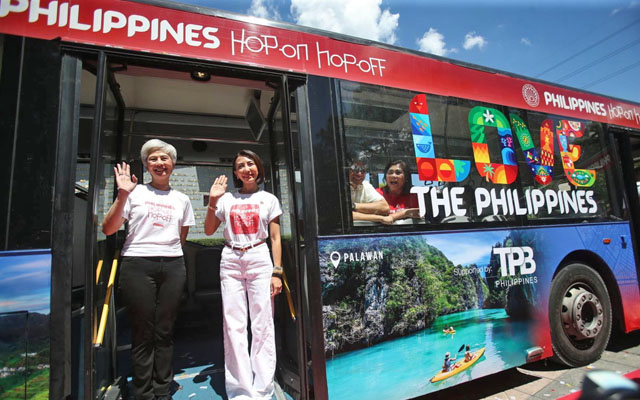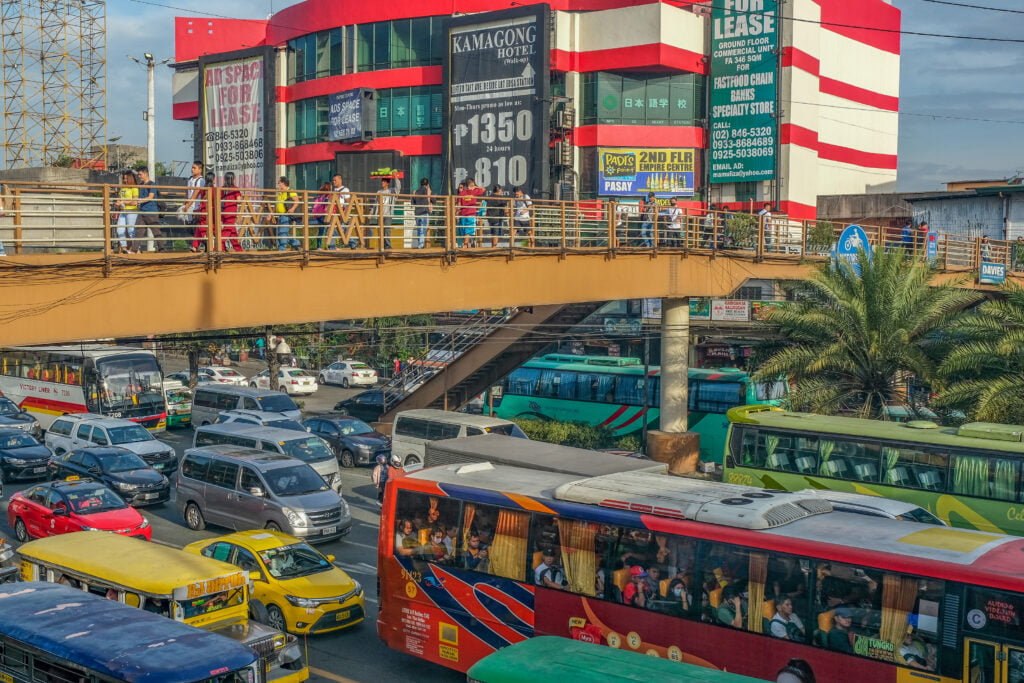Transit Advertising Philippines: Get To Hundreds Of Travelers Daily
Transit Advertising Philippines: Get To Hundreds Of Travelers Daily
Blog Article
Understanding the Duty of Transit Marketing in Enhancing Brand Name Exposure and Consumer Engagement
Transit advertising and marketing has arised as a critical element in the marketing landscape, supplying special possibilities for brands to boost their presence and engage consumers efficiently. With the capacity to reach a restricted and diverse audience throughout their everyday commutes, these advertising approaches are not merely about exposure; they are regarding developing purposeful links with possible customers. As we check out the diverse advantages and cutting-edge strategies within transportation advertising, it ends up being important to consider how these elements collectively affect consumer understanding and habits, questioning concerning their long-lasting influence on brand name commitment.
Interpretation of Transportation Advertising And Marketing
Transportation marketing refers to the practice of promoting items, solutions, or brands with advertisements placed around mass transit systems. This kind of advertising and marketing incorporates a range of placements, including posters on buses and trains, electronic displays at transit stations, and covers on the outside of cars. It aims to get to a varied target market, taking advantage of on the high foot traffic connected with public transportation.
Transit advertising is purposefully placed to catch the attention of travelers, who commonly spend substantial time traveling or waiting. By incorporating ads right into the day-to-day routines of people, brands can create a long-term perception and foster brand recognition. The tool is particularly reliable in urban settings, where public transport is a primary setting of travel.
In addition, transportation advertising can promote localized targeting, enabling companies to get to particular demographics based upon transportation courses and station locations. As urban populaces expand and the use of public transportation boosts, this advertising and marketing technique has obtained importance as an important element of incorporated advertising techniques. The vibrant nature of transportation advertising, integrated with its capacity to engage consumers in a restricted environment, highlights its relevance in contemporary marketing techniques.
Benefits of Transit Marketing
The performance of transit advertising depends on its capacity to supply a wide variety of advantages to brand names seeking to improve exposure and involvement. Among the primary benefits is the considerable reach it supplies; transit ads can properly target diverse demographics across urban areas, getting to both pedestrians and travelers alike. This wide direct exposure substantially boosts brand understanding.
An additional advantage is the high frequency of impressions. As transit automobiles follow recognized courses and stop at several places, they create recurring exposure that enhances brand name messages. This frequency promotes knowledge, which is crucial in consumer decision-making.
Transit marketing is additionally economical compared to other media systems. Provided its extensive reach and capacity for high impressions, brands commonly experience a lower expense per thousand impacts (CPM), optimizing their advertising and marketing spending plan.
Additionally, transit advertisements can develop a feeling of area link. By straightening with local transportation systems, brands can resonate with local target markets and cultivate a feeling of local pride. This localized method improves brand name loyalty and involvement, making transit marketing an engaging selection for organizations aiming to solidify their existence in the market.

Efficient Methods for Transportation Campaigns
To take full advantage of the impact of transportation campaigns, brand names ought to utilize calculated planning and implementation tailored to their target audience. Initially, determining the demographic attributes of the audience making use of public transit is critical. This enables brand names to produce personalized messaging that reverberates with prospective customers.
Following, selecting the appropriate transit tools is important. Whether making use of bus wraps, metro posters, or digital displays, each medium has unique benefits that can boost exposure. For circumstances, dynamic visuals on bus wraps can draw in interest, while digital ads can be upgraded often to reflect prompt promotions.
In addition, incorporating a cohesive branding method across transportation systems makes sure consistency and reinforces the brand name's identity. Using captivating designs and unforgettable taglines will certainly enhance brand recall among commuters.
Finally, timing is an essential aspect in executing successful transit campaigns. Introducing projects throughout optimal traveling hours or neighborhood occasions can considerably raise presence and engagement. By employing these strategies, brands can successfully harness the capacity of transportation marketing, promoting greater recognition and link with their target audience. Ultimately, a well-executed transportation project can drive substantial growth in brand name exposure and customer involvement.

Gauging Influence and Involvement
In reviewing the effectiveness of transportation ad campaign, accurate measurement of impact and engagement is essential for brands looking for to optimize their advertising and marketing strategies. Metrics such as reach, frequency, and perceptions offer fundamental data to analyze exposure. Examining these factors aids determine the number of possible consumers are exposed to the advertisements throughout their daily commutes.
Engagement can be more determined with customer communications, such as website web traffic, social networks discusses, and straight actions to calls-to-action included in the ads. Utilizing devices like QR codes or one-of-a-kind Links can promote tracking of consumer behavior directly connected to transportation projects. Studies and comments devices also work as valuable approaches to collect qualitative information on customer understandings and recall of the advertisement.
In addition, progressed analytics and attribution versions can associate transportation exposure with subsequent buying habits, providing insights into the return on financial investment. By utilizing a detailed technique that combines quantitative and qualitative actions, brand names can develop a nuanced understanding of their transit marketing impact. Eventually, this data-driven approach makes it possible for brand names to improve their campaigns, ensuring they reverberate efficiently with target audiences and improve total brand name exposure.
Case Studies of Successful Projects
Successful transit advertising and marketing projects function as engaging examples of how effective strategies can raise brand name exposure Bonuses and interaction. Transit Advertising Philippines. One remarkable situation is the "I Love New York" campaign, which transformed the city's picture and drew in numerous vacationers. By using train ads, signboards, and bus covers, the project created a solid, cohesive brand identity, causing a substantial uptick in tourist and neighborhood organization patronage
An additional exemplary project is Coca-Cola's "Share a Coke" campaign, which leveraged transit advertising and marketing to personalize the brand name experience. By featuring prominent names on advertising products throughout numerous transportation platforms, Coca-Cola promoted a much deeper psychological connection with consumers, motivating them to share their experiences on social media sites.
Furthermore, the "Got Milk?" campaign effectively used public transportation ads to get to a wide target market, reinforcing the message of the relevance official statement of milk in a well balanced diet plan. The project saw a measurable boost in milk usage in target demographics.
These case researches show that when carried out attentively, transportation marketing can considerably enhance brand presence, foster consumer engagement, and drive measurable outcomes, showing its essential duty in modern advertising and marketing strategies. - Transit Advertising Philippines
Conclusion
Finally, transportation advertising and marketing works as an important tool for boosting brand name visibility and cultivating consumer engagement. By making use of purposefully put promotions within public transportation systems, brand names can properly reinforce and reach diverse audiences recognition through constant direct exposure. The execution of targeted messaging and ingenious methods better enhances the influence of transportation projects. Inevitably, the capacity to measure interaction and analyze successful study underscores the performance of transportation advertising and marketing in driving brand commitment and customer communications. important site
Transit marketing has actually emerged as a pivotal aspect in the advertising and marketing landscape, using unique opportunities for brand names to boost their exposure and engage customers successfully.Furthermore, transit advertising can facilitate localized targeting, allowing organizations to reach particular demographics based on transportation paths and station locations.In examining the efficiency of transportation marketing projects, exact measurement of effect and involvement is important for brand names looking for to optimize their advertising methods.Successful transportation marketing campaigns serve as compelling examples of exactly how efficient strategies can elevate brand name visibility and interaction.In verdict, transit marketing offers as a crucial tool for enhancing brand name exposure and fostering consumer involvement.
Report this page